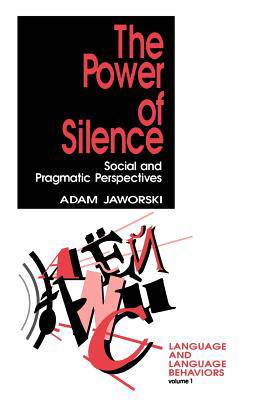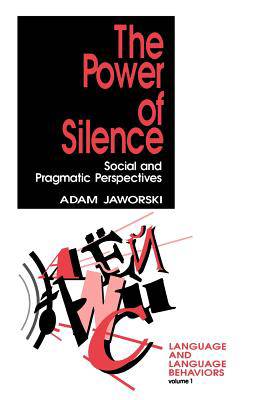
- Retrait gratuit dans votre magasin Club
- 7.000.000 titres dans notre catalogue
- Payer en toute sécurité
- Toujours un magasin près de chez vous
- Retrait gratuit dans votre magasin Club
- 7.000.0000 titres dans notre catalogue
- Payer en toute sécurité
- Toujours un magasin près de chez vous
Description
Adam Jaworski tells his reader in the preface to The Power of Silence that he wants ′to show silence as a rich and powerful tool of communication and to provide some clues as to how it works in different areas of human communication and how it can be accounted for by various theories.′ Jaworski does this, and more, in this very extensive exploration of silence as a means of communication. . . The gems of Jaworski′s discussion come through his examples, which are woven together from his own Polish background and an astute coverage of cross-cultural (Polish, Amish, Apache), feminist and mass media research on silence. The book covers a broad scope of orientations: linguistic, psycholinguistic, paralinguistic, ethnographic, pragmatic, literary, and artistic. As such, The Power of Silence has broad appeal to anyone who deals even marginally with communication issues, especially teachers, who will appreciate his coverage of silence in the classroom. . . Jaworski′s book serves the necessary function of bringing together various types of research on silence into one volume. . . . He has accomplished his task. It would not be a mistake to recommend the book to students as an introduction to silence and communication. Jaworski′s full bibliography, and the book overall, is an invaluable resource for scholars of linguistics, communication theory, discourse analysis, political communication, literature, the rhetoric of art, intercultural communication, women and language, and mass media. --Discourse & Society Is silence the antithesis of communication? Or is it simply another way in which humans exchange information? In this theoretical yet accessible account of a variety of different aspects of silence, Jaworski contends that silence is an extremely powerful communicative tool. This innovative volume includes a research overview that shows the influence of related work in the fields of media studies, politics, gender studies, aesthetics, and literature. For example, one section of the book illustrates the power of silencing in politics; another chapter emphasizes the importance of silence beyond linguistics and politics in terms of artistic expression. By incorporating the work of a wide array of theorists--such as Brown and Levinson (politeness), Leach (taboo), Rosch (prototypes), and Sperber and Wilson (relevance)--Jaworski keeps his approach intentionally broad and eclectic in order to explore the concept of silence as a rich and evocative aspect of communication. The author argues that, in theoretically pragmatic terms, silence can be accounted for by the same principles as those of speech. He then investigates new ways of studying socially-motivated language, particularly emphasizing silence and the silenced. By applying several frameworks of analyses to both linguistic and non-linguistic dimensions of silence, Jaworski contributes to the integrative study of culture, of which language is an integral part. Researchers, professors, and advanced students throughout communication studies and sociolinguistics will find this volume to be an innovative and essential resource.
Spécifications
Parties prenantes
- Auteur(s) :
- Editeur:
Contenu
- Nombre de pages :
- 208
- Langue:
- Anglais
- Collection :
- Tome:
- n° 1
Caractéristiques
- EAN:
- 9780803949676
- Date de parution :
- 01-11-92
- Format:
- Livre broché
- Format numérique:
- Trade paperback (VS)
- Dimensions :
- 141 mm x 216 mm
- Poids :
- 308 g

Les avis
Nous publions uniquement les avis qui respectent les conditions requises. Consultez nos conditions pour les avis.






